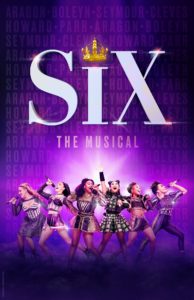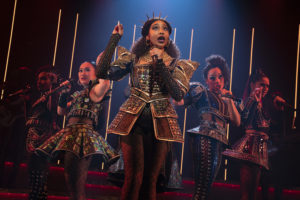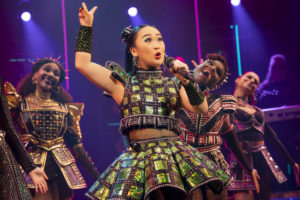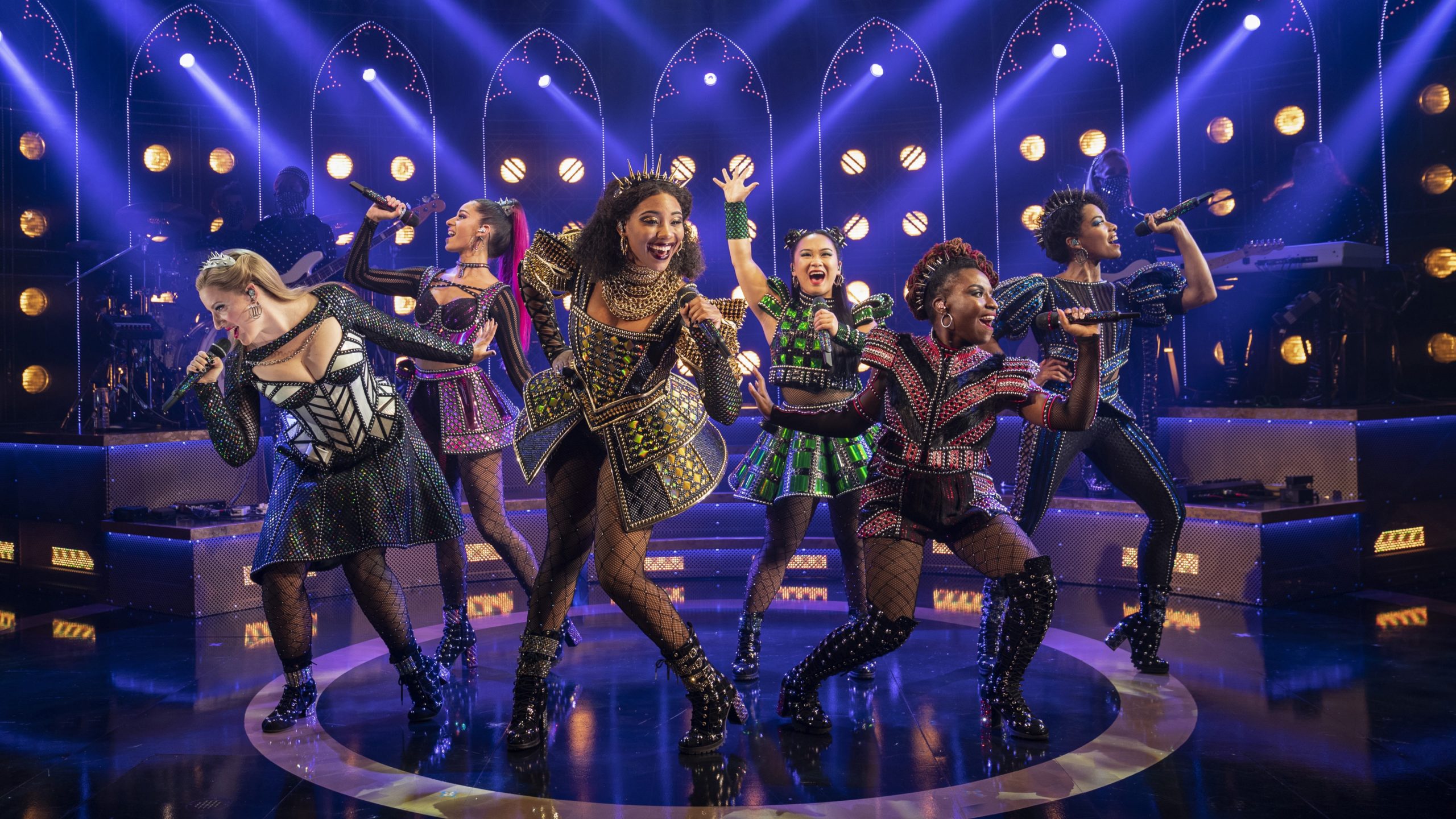NEW YORK CITY — I love a good ensemble show. There is something satisfying about watching a play that requires the entire cast to pull together and shoulder the burden of the script equally. No play I have seen in recent memory distributes those demands more evenly across performers than Six, currently playing on Broadway (and elsewhere). The six female performers of this show have equal stage time, an equal number of songs, and equal talent. Six is an ensemble show that revels in the unity of its cast and sets a high bar for other ensemble shows to meet.

Six tells the story of the six wives of Henry VIII in the form of an American Idol-esque concert where the women compete to convince the audience that each one suffered the most as Henry’s wife. Six is a Hamiltonian take on a slice of British history. The use of diverse casting, 21st century musical styles, and a progressive message all are reminiscent of Lin-Manuel Miranda‘s smash hit, but Six never feels derivative. It is its own work of art that succeeds on its own terms.
The entire musical — music, lyrics, and book — is the brainchild of Toby Marlow and Lucy Moss. Their cleverness does not end at the concept; the songs are strikingly creative. After all, there is no other musical that could feature the lyrics, “Serious, stern and slow / Gets what he wants, and he won’t take no. / Passion in all that he touches / The sexy secretary to the dowager duchess.” The juxtaposition of modern pop music and the Renaissance story often leads to pleasant surprises like this.
Directors Lucy Moss and Jamie Armitage stage Six as a 90-minute rock concert. The six performers stay on stage nearly the entire play, and the on-stage all-female band, called the Ladies in Waiting (Julia Schrade on keyboard, Michelle Osbourne on bass, Kimi Hayes on guitars, and Elena Bonomo on drums), rock out in a unfettered display of girl power. Each actress sings lead in a single song, and while each does, the others sing backup. The transitions between songs are smooth, and the competitive dynamic among the characters keeps the show interesting. The energy that the six singers and four musicians exude is key to the success of the show’s concept, and the pop dancing (from choreographer Carrie-Anne Ingrouille) filled the stage with active, exciting movement.

Taking the characters in the order in which they married Henry, Catherine of Aragon is played by Bre Jackson. The character functions as a de facto leader of the group, and Jackson decisively takes charge. Her solo song, “No Way,” showcases her powerful voice, and yet Jackson also injects some tenderness in the section of the song where Catherine asks what she did wrong to upset Henry. Andrea Macasaet plays Anne Boleyn as a bubblegum pop star, and the cutesy “Don’t Lose Ur Head” is oddly both passive-aggressive and defiant. Macasaet gets the most jokes in the dialogue (often poking fun at the character’s death by beheading), and she plays the role of frenemy to the other wives delightfully well.
As third wife Jane Seymour, Keri René Fuller is the weakest of the cast. Throughout the evening, Fuller lacked the attitude and sass of a pop diva, and her subdued facial expressions stood out in an unfavorable way. Fuller’s voice can match her castmates’ vocal abilities, though, and her rendition of “Heart of Stone” was exquisite. As Anna of Cleves, Brittney Mack channeled her inner Beyoncé for the song “Get Down.” She also perfectly executed the most extensive comedic bit of the show: an ironic monologue where Anna laments the “burden” of living an independent life of luxury in a palace after Henry annulled their marriage.

Samantha Pauly brings a touch of sultriness to her song “All You Wanna Do,” the most traditionally Broadway song in the score. Pauly also gives her character — fifth wife Katherine Howard — a surprising level of depth, allowing for nuance in her portrayal. Similarly, Brennyn Lark as Catherine Parr (Henry’s final wife) shows the most tenderness in her role. Most notably, Lark sang “I Don’t Need Your Love,” as a beautiful song of longing that was a nice contrast to the more fast-paced numbers in the score.
Lighting designer Tim Deiling did the most to create the visual feel of a rock concert. The upstage visible lighting instruments illuminated both stage and audience, giving the crowd a communal experience with the actors. The LEDs embedded in Emma Bailey’s set were a source of surprise, and I loved how they could be used to form decorated gothic arches, frames for profile pictures, and even the name of the musical itself. Costume designer Gabriella Slade created costumes that were an elaborate combination of Tudor-era cuts, medieval armor, and modern pop star opulence. Slade color-coded the women so that they were easy to keep track of (yellow for Catherine of Aragon, green for Anne Boleyn, white for Jane Seymour, red for Anna of Cleves, purple for Katherine Howard, and blue for Catherine Parr). It is a unique look that makes Six stand out from any other Broadway show.
While I enjoyed Six as an ensemble play, there are so many other reasons for audiences to appreciate it: as a concert, a history lesson, a celebration of sisterhood, a tribute to the subgenres of pop music, and more. Six has broad appeal, and I recommend this rapturous show without hesitation.
[box]The Broadway production of Six plays Sundays, Mondays, Wednesdays, and Thursdays at 7 PM, Fridays and Saturdays at 8 PM, Saturdays at 3 PM, and Sundays at 2 PM at the Lean Horne Theatre (256 West 47th Street, New York City). For more information, visit sixonbroadway.com.[/box]
